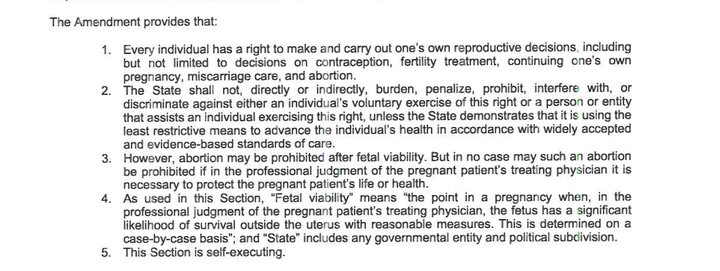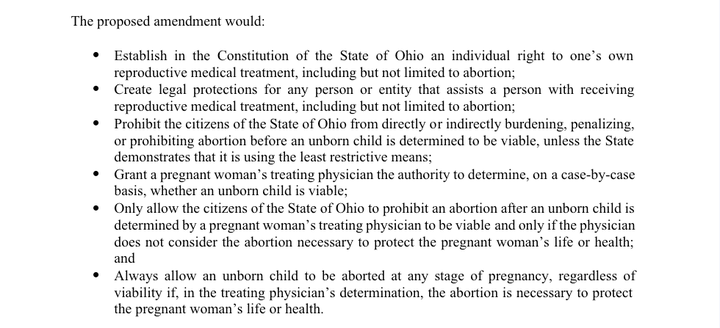Republicans in Ohio are still trying to pass their anti-choice agenda, even after voters in the state successfully thwarted a ballot initiative earlier this month that would have made it harder to pass a pro-choice constitutional amendment this fall.
In November, voters will consider a ballot initiative that seeks to enshrine abortion rights and other reproductive freedoms into Ohio’s Constitution. But the five-member Ohio Ballot Board, led by anti-choice advocate and Ohio Secretary of State Frank LaRose, on Thursday approved anti-choice language to be used in the initiative, which may confuse voters.
The approved summary language uses “unborn child” instead of “fetus.” It does not include any language about the right to make decisions about miscarriages, fertility treatments or contraception — even though that’s a significant part of the proposed amendment. The approved summary language is also longer than the original supplied by pro-choice organizations behind the initiative, meaning the board can’t argue it needed to trim the summary that would appear on ballots.
Below are screenshots of the original summary language and the newly-approved summary language from LaRose.

The Right to Reproductive Freedom with Protections for Health and Safety

The Right to Reproductive Freedom with Protections for Health and Safety
“Having worked extensively on drafting this, I do believe it’s fair and accurate,” LaRose said of the approved summary language in a Thursday meeting. LaRose did not immediately respond to HuffPost’s request for comment.
Pro-choice advocates are calling the language intentionally vague and misleading.
“Secretary of State Frank LaRose today exploited the Ohio Ballot Board process in a last-ditch effort to deceive and confuse Ohio voters ahead of the November vote on reproductive freedom,” Ohioans United for Reproductive Rights, one of the main groups advocating for the amendment, said in a press release on Thursday.
Abortion is legal through 22 weeks of pregnancy in Ohio, but a six-week abortion ban has been temporarily blocked in court and awaits a ruling from the Republican-dominated Ohio Supreme Court. The constitutional amendment would prevent the state from banning abortion before fetal viability, around 22 to 24 weeks.
LaRose gave the deciding vote to approve the language in a 3-2 final vote. The Ohio secretary of state was a vocal advocate for the August ballot measure, Issue 1 ― an initiative to raise the threshold for altering the state constitution from a simple statewide majority vote to 60%. Although a simple majority has been the standard in Ohio for over 100 years, anti-abortion advocates in the state called for a special election to raise the vote threshold in a preemptive attempt to block the pro-choice constitutional amendment.
The summary language created by LaRose and the rest of the ballot board does not change the meaning or intent of the actual constitutional amendment. The full text of the amendment will be available at boards of elections on voting day, and LaRose told the Ohio Capital-Journal that posters including the full text will be available at polling locations. But only the summary will be on the ballots Ohioans take into voting booths.
Ohioans United for Reproductive Rights and other abortion rights advocates had requested that that ballot language mirror the full constitutional amendment to ensure accuracy and transparency. “By using the full text, voters will see for themselves the language they are being asked to approve and can make a free and independent decision on this fundamental question,” an attorney for the petitioners wrote in a letter to LaRose earlier this week.
The Nov. 7 vote on the pro-choice constitutional amendment will also be called Issue 1, adding more confusion for both abortion rights advocates and opponents given that the August special election on raising the vote threshold was also called Issue 1.

